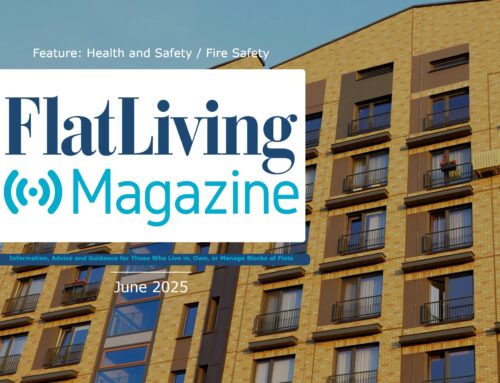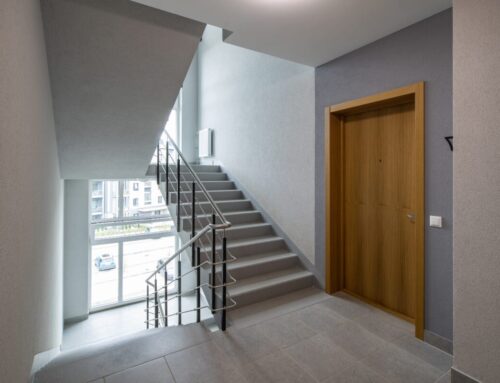Buying Your Freehold
Preparation for buying your freehold
Belinda Thorpe, Managing Director of Residentsline advises on how to prepare for buying your freehold with the following steps that need to be followed. In many instances several steps will proceed together. What must be considered is that thorough preparation must be carried out before service of the Initial Notice on the landlord as once that has been served – the enfranchisement procedure commences – and the tenants must be ready to respond to demands for information within statutory deadlines.
Lack of preparation could cause missed deadlines, delays and defaults.
The landlord’s reasonable professional fees become the responsibility of the tenants from the moment of service of the Initial Notice whether the procedure completes or not.
Check the Building and Tenants Qualify
Building Requirements
Firstly, the Building which houses the flats must comply with statutory requirements; secondly, there must be sufficient number of tenants who qualify under the statutory requirements.
The test to see if the building qualifies is to check that:
- There is a minimum of 2 flats in it;
- At least two thirds of the flats are let to Qualifying Tenants;
- No more than 25% of the internal floor area of the building (excluding common parts) is used or intended to be used for non-residential purposes e.g. shops/offices etc.
Note, however that garages and parking spaces used by flats in the building are classed as residential. (This sort of measurement needs to be carried out by a professionally qualified surveyor); - The building is not a conversion into 4 or fewer flats which is not a purpose built block;
- If the freeholder (or another adult family member) lives in the building for the last 12 months and they lived there before it was converted to flats, you have no right to buy the freehold.
- The freehold of the building does not include any track of an operational railway (overground – as opposed to subway or underground) including a bridge or tunnel or a retaining wall to a railway track.
- The building is not within a cathedral precinct;
- The building is not a National Trust property;
- The building is not a Crown property.
If the building satisfies all the above criteria you then need to check that the tenants are Qualifying Tenants and that there are enough of them for a successful procedure.
Tenants Requirements
Check that the lease is a long lease ie:
- Originally granted for more than 21 years; or
- A shorter lease which contains a perpetual right to renew; or
- A lease terminable on death or marriage; or
- A continuation of a long lease under the Local Government Housing Act 1989 following expiry of the original term; or
- A shared ownership lease where the tenant’s share is 100%; or
- A lease granted under the Right to Buy legislation.
Note, however, that even if the tenant satisfies the above criteria, he/she will not be a Qualifying Tenant if any of the following applies:
- The landlord is a charitable Housing Trust;
- The tenant owns more than 2 flats in the building (either jointly with others or solely in his/her own name);
- The tenant has a business lease;
- The tenant has not owned the flat for 2 years before the service of the Initial Notice.
Exercise the right to buy the freehold
It must then be established that sufficient number of Qualifying Tenants wish to exercise the right to buy the freehold.
The minimum number of tenants needed to participate is equal to half the number of flats in the building e.g. if there are 20 flats in the building then at least 10 Qualifying Tenants must participate in the action.
If, however, there are only 2 flats in the building then both Qualifying Tenants must participate.
As you can see the checking process is precise and it may be at this stage that you seek professional advice from a lawyer with the relevant expertise as well as a surveyor as the measurements required to ascertain qualification of the building must be made according to RICS guidelines.
Sufficient Numbers
Get organised for Enfranchisement
Once you have ascertained qualification as above then you will know the minimum number of tenants required to take part in the process. Possibly more than the required minimum will want to take part; alternatively you may need to actively encourage more people to join in.
Whatever the scenario, the first thing that needs to be sorted out is the organisation of a committee who will facilitate proceedings and liaise with participating tenants. Obviously, where groups of diverse people are involved (and some groups could be very large) then getting agreement on matters can be difficult, so once the group is formed it is recommended that all participating tenants enter into a formal agreement which governs their joint actions during the enfranchisement procedure e.g. rights of voting; negotiation, agreement of terms and the individual tenant’s financial contribution.
Solicitors should be instructed to prepare a formal Participation Agreement which will govern all the above and which can be relied on in the case of a dispute amongst participating tenants. It is especially important in the situation of large blocks of flats where any delays in decision making or disputes could endanger compliance with time limits and damage the enfranchisement procedure.
Decisions need to be made about funding the acquisition. Should payment be made up front? Is a loan or mortgage required? If so, should steps be taken at this stage to obtain loan finance in readiness for procedure? Certainly a fund will be required from the outset to cover costs of initial steps of gathering information, setting up the Nominee Purchaser Company, formalising future funding arrangements etc; what will happen after the acquisition, will new leases be granted?
As property and conveyancing transactions are involved in the enfranchisement procedure, a property solicitor should be engaged to assist with these matters.
Take a look at the ALEP Directory for find a professional who can help you.




Leave A Comment